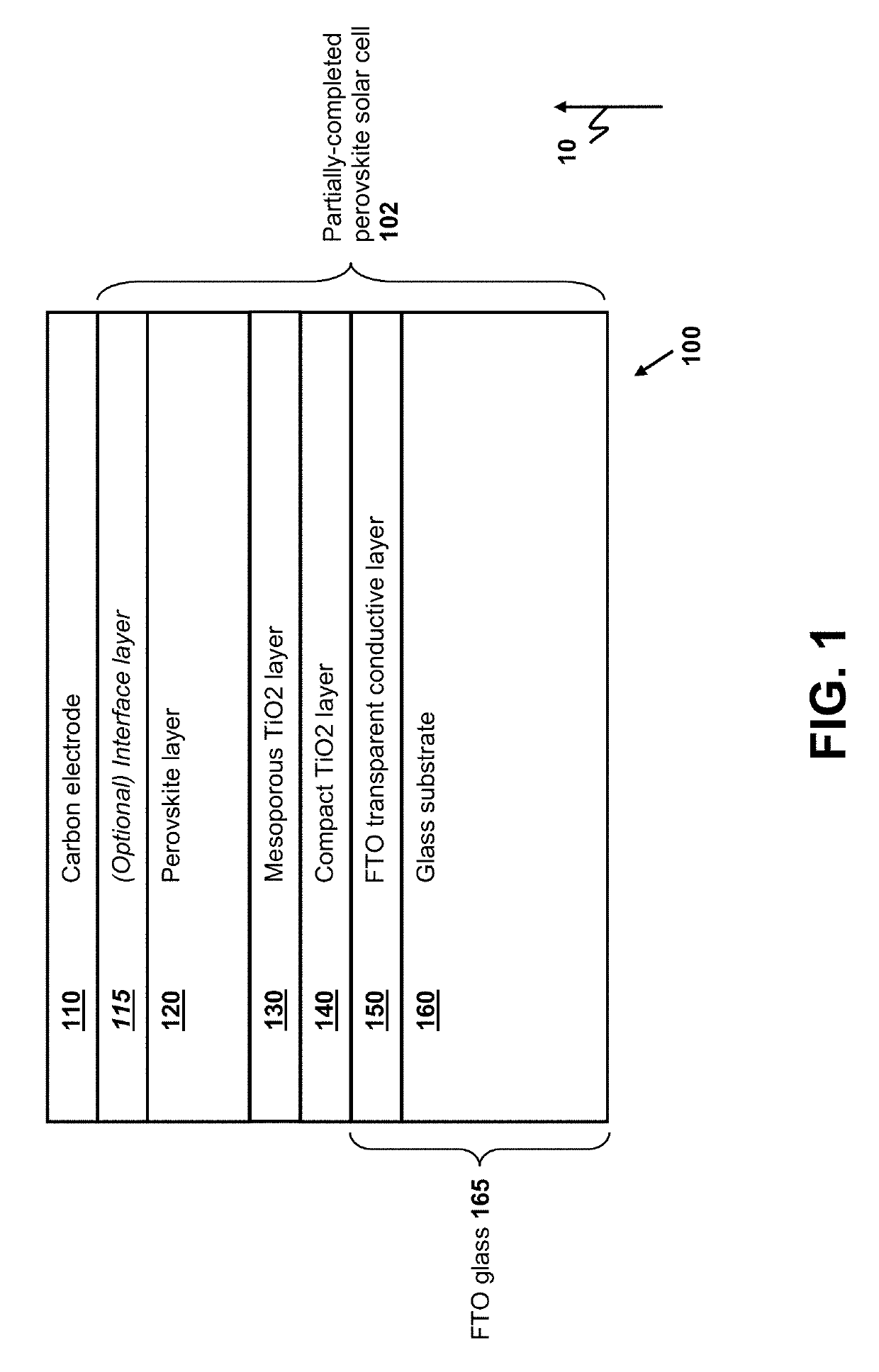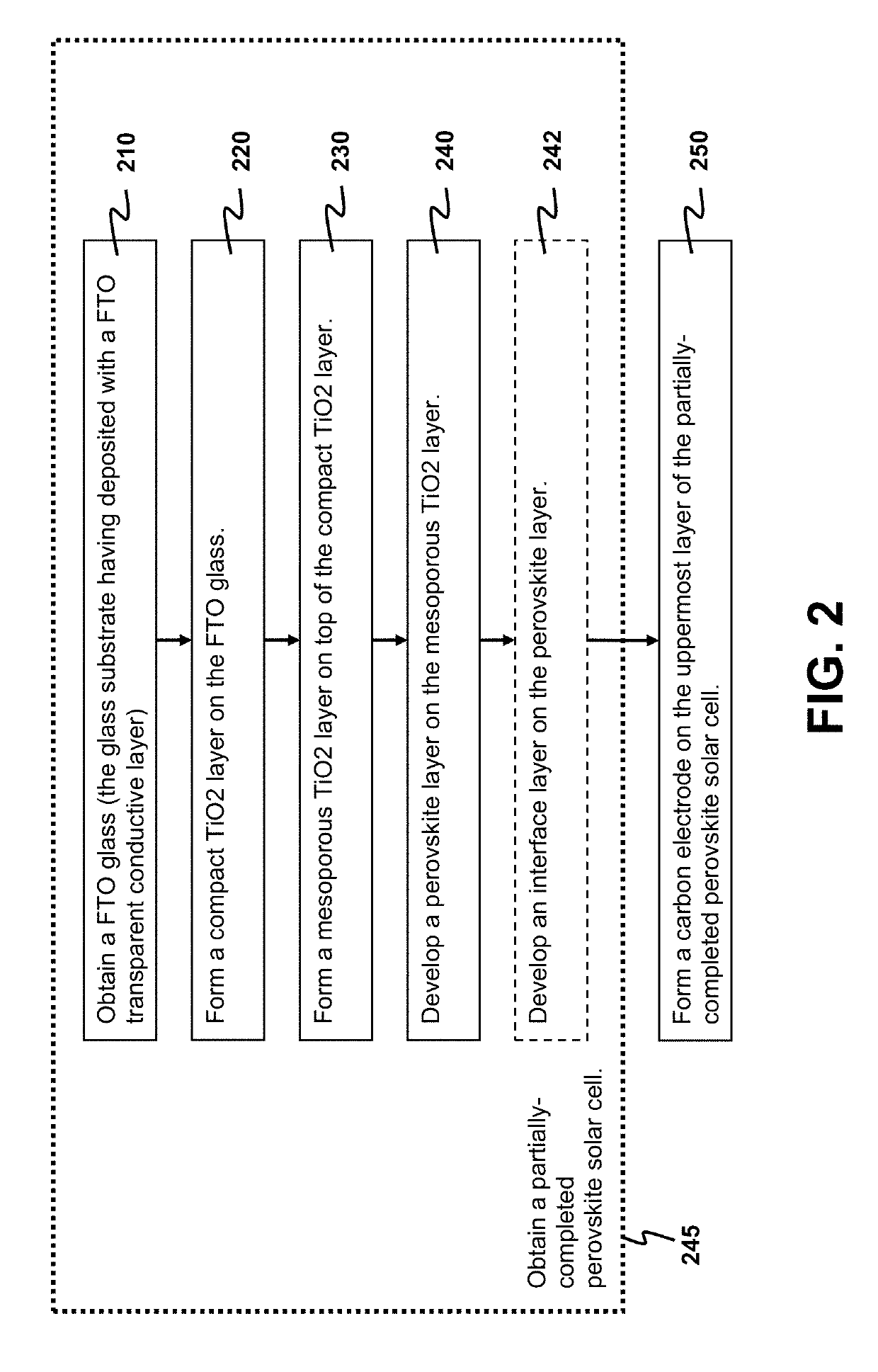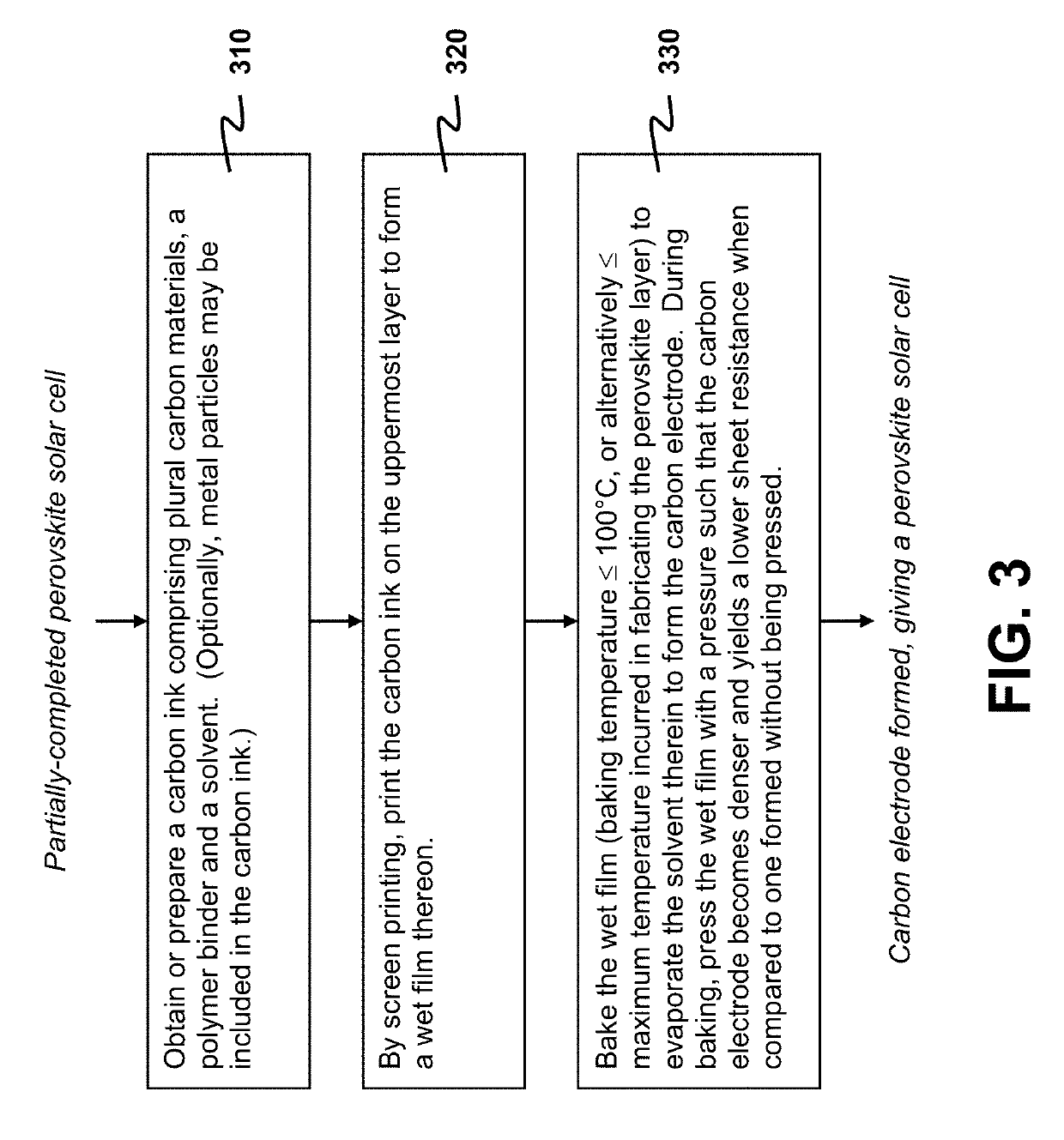Method for forming perovskite solar cell with printable carbon electrode
- Summary
- Abstract
- Description
- Claims
- Application Information
AI Technical Summary
Benefits of technology
Problems solved by technology
Method used
Image
Examples
Embodiment Construction
[0021]The present invention provides a technique for fabricating a PSC with a printable carbon electrode. Particularly, the present invention details a method for forming the carbon electrode on a perovskite layer or an interface layer of the solar cell without using high-temperature annealing at a temperature of 400-500° C. The interface layer is an optional layer above the perovskite layer for improving the PCE. Specifically, an embodiment of the present invention allows a baking temperature of only 100° C. or lower. Furthermore, the carbon electrode is deposited onto the perovskite layer or the interface layer via printing a conductive carbon ink on the perovskite layer or the interface layer. The use of both printing and low-temperature treatment keeps a low manufacturing cost. Furthermore, the disclosed method is developed with another major objective of pushing up the PCE, through an advantageous use of a hot press treatment in forming the carbon electrode.
[0022]The focus of t...
PUM
| Property | Measurement | Unit |
|---|---|---|
| Temperature | aaaaa | aaaaa |
| Temperature | aaaaa | aaaaa |
| Fraction | aaaaa | aaaaa |
Abstract
Description
Claims
Application Information
 Login to View More
Login to View More - R&D
- Intellectual Property
- Life Sciences
- Materials
- Tech Scout
- Unparalleled Data Quality
- Higher Quality Content
- 60% Fewer Hallucinations
Browse by: Latest US Patents, China's latest patents, Technical Efficacy Thesaurus, Application Domain, Technology Topic, Popular Technical Reports.
© 2025 PatSnap. All rights reserved.Legal|Privacy policy|Modern Slavery Act Transparency Statement|Sitemap|About US| Contact US: help@patsnap.com



